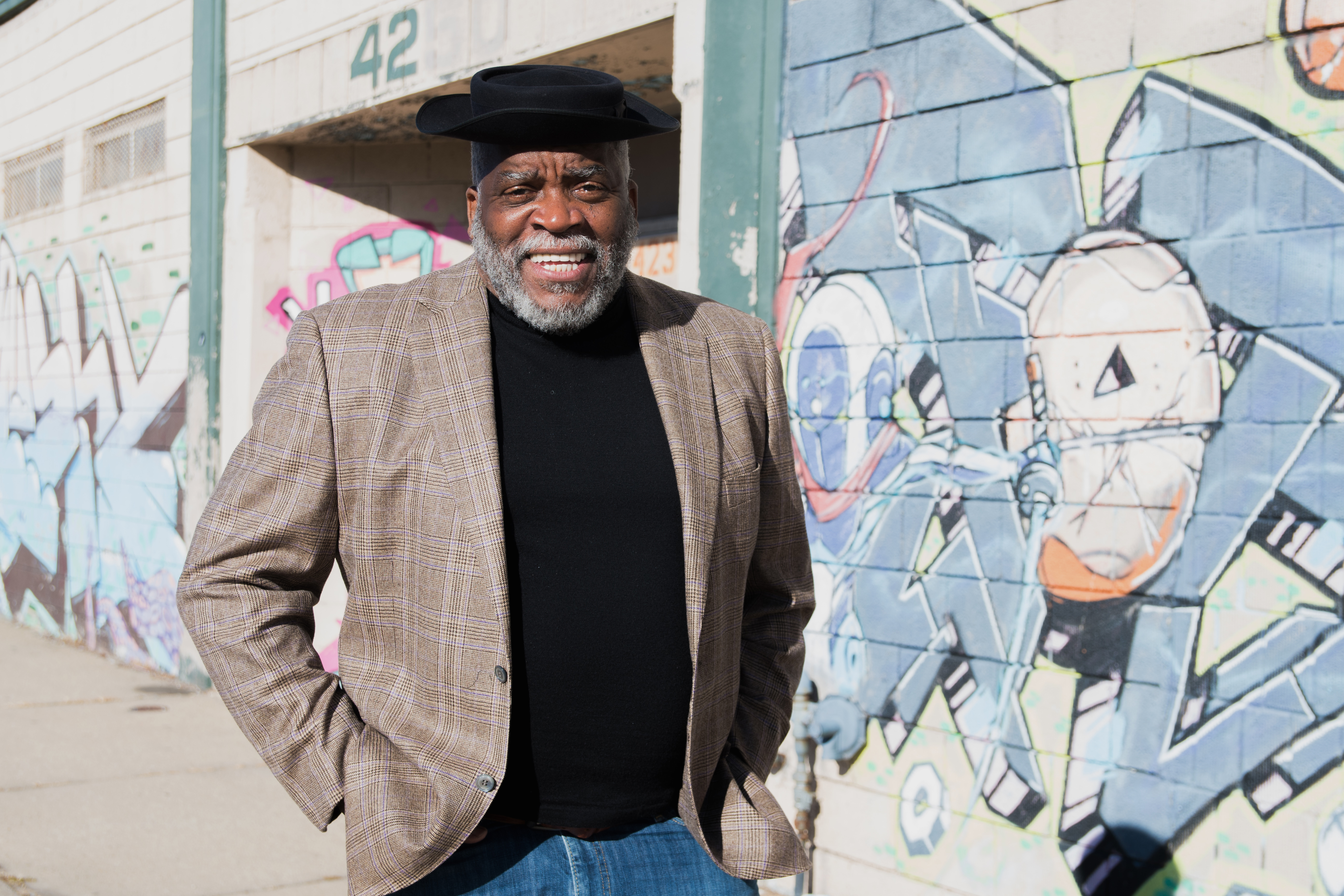
Detroit development is one of the hottest topics in the city. George N’Namdi, owner of the N’Namdi Gallery located in what is now Midtown (but was definitely the Cass Corridor during the gallery’s earlier days), has gotten a peek at what he believes can be the future of development in Detroit.
First of all, it’s not downtown. Second, it’s not all white people.
“A lot of the opportunities for downtown are gone, by and large. One of the reasons is what it costs to play now. You have a multi-billionaire who’s leading the development,” said N’Namdi.
The vision of Detroit’s rapidly growing downtown and surrounding areas has given hope to many that the city’s comeback story is for real this time. Plus, the relatively recent rollout of proposed neighborhood developments has at least temporarily placated the critics who have consistently drawn attention to the yawning gap between downtown and everywhere else, because now there does seem to be no small amount of attention being paid to the areas where the majority of Detroiters who didn’t just arrive actually live.
The best development opportunities for black developers are in the neighborhoods, and N’Namdi hopes that others can see what he sees on a broader scale, which is maintaining a strong black presence in the city’s growth plans. On a more scaled-down vision, N’Namdi is looking at a specific area of Detroit – Grand River between Rosa Parks and Martin Luther King – where he envisions something similar to a Harlem Renaissance type of community where culture, arts, and raw intellectual stimulation could be unleashed simply by affording a welcoming space to those most willing to appreciate such a space.
“We need to have more of an art district. I do see it as more of a diverse place that brings all sorts of people there. …We need to have more of an intellectual environment here. And an environment that is inclusive. Because when people of color are the developers, you end up with a more diverse development, than when the person is European. Because Europeans generally fall back on the 25 % rule” which aims to keep the level of non-whites at no higher than 20-25% in order for it to be sustainable. Any higher than that and the belief among too many white developers is that the neighborhood automatically deteriorates because anything over 25% is when white people start leaving the neighborhood.
“I wanted a city where, like Brooklyn, where you had that whole intellectual vibe. See, we don’t have a place where young people – professional, intellectual – can really hang out.
“What I’m seeing is that we have a need in Detroit; one, to maintain the African American presence and energy in terms of development, and just the overall vibe of Detroit. Because Detroit is a city that is very unique from other cities because of African Americans role in it African Americans have more of an ownership role here than practically any other city that I know of. We have a history of owning, for one. It’s not the size of the African American community, it’s more the mentality. Detroiters will always say, we can go anywhere and do things.”
Which, to N’Namdi’s way of thinking, explains why he just went ahead and expanded his gallery to include one in Chicago and another in New York. His son has a gallery in Miami, Florida. It was Detroit that gave him the confidence to push outward, without fear that something could maybe go wrong.
“There is a funk here in Detroit, and the base of that funk is grit. That means we can just keep going.”
Just do it.
“Someone said to me, ‘Wow, you know what? You have three galleries in the African American intellectual meccas’. Detroit allowed me to be able to go and open in Chicago and New York without fear. Detroit empowers African Americans. It’s somewhat of a sidebar, but that’s one reason why today it’s a challenge for us because our power came from having grit. It was not necessarily just having money,” said N’Namdi.
That grit and sense of empowerment that emanates so uniquely from Detroit is what needs to not only be preserved but built upon. Detroit has good bones, and Grand River is a stretch that exposes that strength in an appreciable way – even though it still remains somewhat under the radar of developers. Art least for now. And except for George N’Namdi.
“What we’re trying to do on Grand River, is we’re calling it the West End Gallery District. What we want is to have galleries with some density, where you can walk from one gallery to the other. …I want to have something where I can help people in the art business. I want to make a profit, but that’s not my driving force. So that way I can help people to get their legs planted. So now, when the rents go up – and they’re gonna go up – they’re able to do it,” he said.
N’Namdi said he isn’t quite sure why Grand River area has so far been kept “under the radar,” but that’s not necessarily a bad thing. Grand River is “very important” in the overall scheme of Detroit development because it is the longest street in Detroit, and also “it has the best skyline view” of any of the major street spokes (Woodward Avenue, Gratiot, Grand River, the Lodge Freeway, I-75 Chrysler freeway). N’Namdi noted that there is already some significant development near Grand River/downtown such as the new DTE Energy Beacon Park, MGM Grand Casino, and Motor City Casino. Plus the property values in the Woodbridge area, also nearby Grand River, are starting to explode. Said Woodbridge reminds him of Brooklyn because of the quality/type of housing stock and the density.
“And one of the things they are really lacking now in Woodbridge is a commercial corridor,” said N’Namdi, which plays right into his strategy for his proposed development.